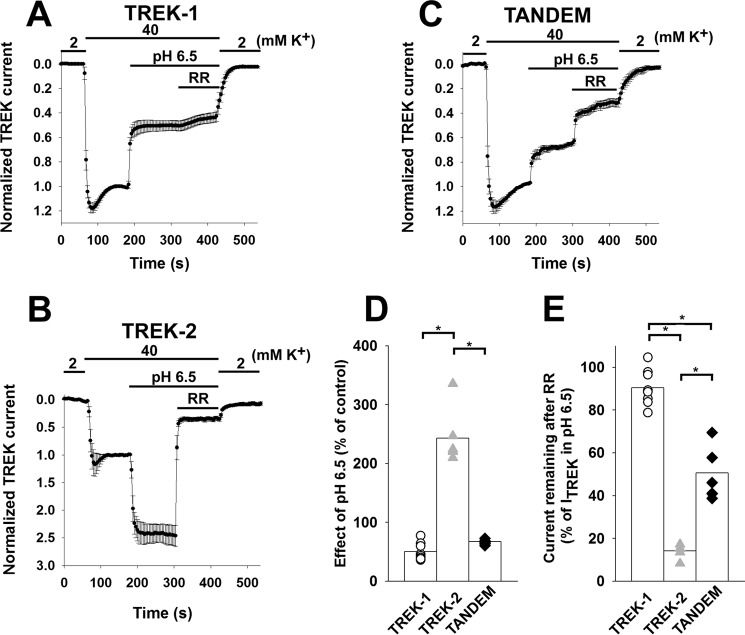FIGURE 1.
Different inhibitory profiles of TREK-1, TREK-2, and the TREK-2/TREK-1 tandem channel. TREK-1, TREK-2, and TREK-2/TREK-1 tandem channels were expressed in Xenopus oocytes. Oocytes were measured with the two electrode voltage clamp method 2–3 days after injection. Currents were measured at −100 mV. Holding potential was −75 mV. [K+] was switched from 2 to 40 mm and then back to 2 mm as shown above the graphs. Acidification of the bath solution and application of 30 μm RR are indicated by the horizontal bars above the recordings. The nonspecific leak current measured in 2 mm K+ was subtracted from the currents. The currents were normalized to the value measured in 40 mm K+. The average of multiple recordings was plotted; error bars indicate S.E. A, TREK-1 is inhibited by extracellular acidification and is RR-insensitive (n = 10 oocytes). B, TREK-2 is activated by extracellular acidification and is potently inhibited by RR (n = 6 oocytes). C, TREK-2/TREK-1 tandem channel is inhibited by extracellular acidification and has an intermediate RR sensitivity (n = 8 oocytes). D, sensitivity of TREK channels to extracellular acidification. TREK-1 (white circles) and the tandem channel (black diamonds) are inhibited (there was no significant difference between the degree of inhibition, p = 0.34), although TREK-2 (gray triangles) is activated by lowering the extracellular pH. Averages of the groups are plotted as columns. E, sensitivity of TREK channels to RR. TREK-1 (white circles) is insensitive, although TREK-2 (gray triangles) is greatly inhibited by RR. The tandem channel (black diamonds) has an intermediate sensitivity. The degree of inhibition is significantly different between all three groups (p < 10−6). Averages of the groups are plotted as columns.

